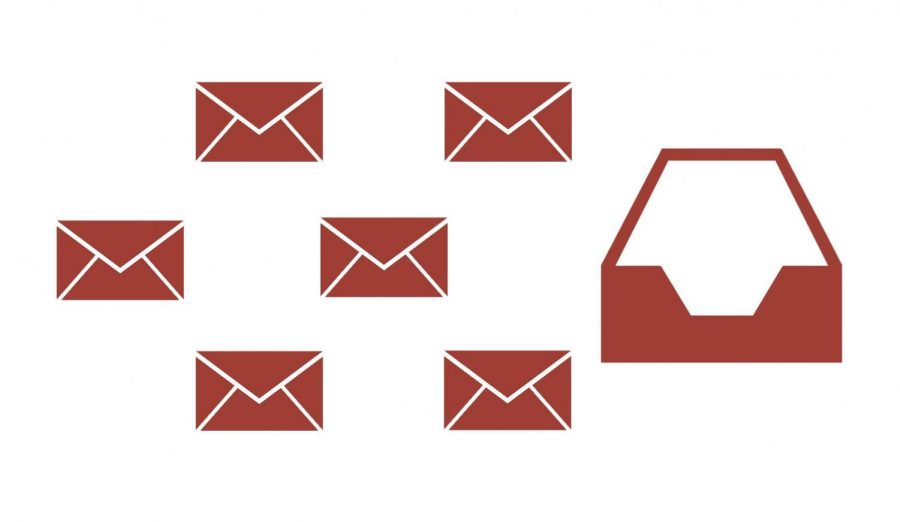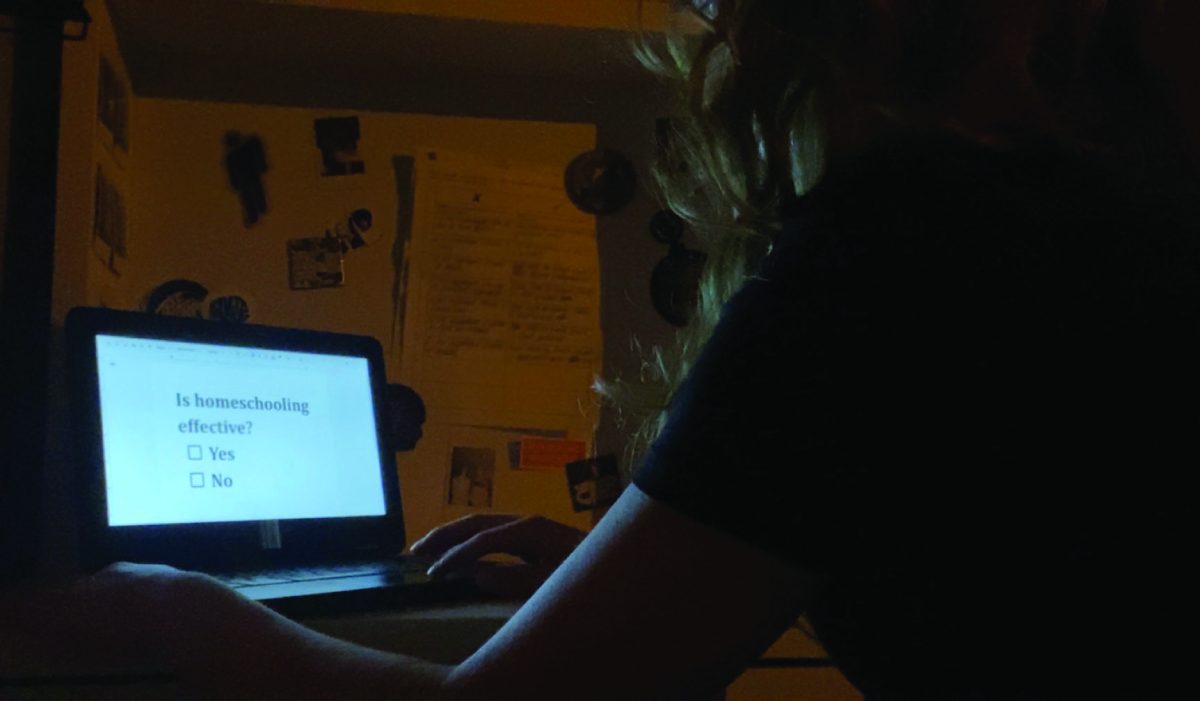The attack of the emails
How the rise has caused an explosion in teachers’ inboxes
March 22, 2021
The development of electronic mail has helped the daily work-life of many peoples’ routines. Its accessibility, efficiency and usefulness improved communication amongst different groups of people. During a harsh pandemic, emails have become more useful now than ever before, especially for schools. Remote learning has caused a blockage of easy communication between students and teachers, resulting in an increase in emails being sent.
Although emails provide connections that have been challenging to attain this year, not many think about the stress that overflowing inboxes may bring. As the pandemic slowly but surely dies down and the possibility of all students returning back to school arises, will the swarm of emails and stress of emails increase or decrease as time moves on?
This school year has given a bigger workload to teachers due to the new hybrid schedule students are following and Zoom learning. On top of that, they are having to put in more work hours outside of school from having to grade papers and, of course, reply to emails.
A survey conducted by Agile Education Marketing taken by teachers around the United States found that teachers receive around 81 to 100 emails each day on average, but as school schedules were adjusted, the number has increased according to teachers at Lincoln Southeast High School (LSE).
First-year LSE Science teacher Taylor Boshart said that the pandemic has impacted many aspects of her life, including her inbox. Before the pandemic, Boshart received around 20 emails a day, now she receives around 45 to 50 a day.
“I have always found that checking my emails and staying on top of it has been overwhelming and a very time-consuming task to go through, but this year more than ever it is a daunting task to complete. I have to set aside a specific time during the night/weekend to fully go through my email and make sure I am up to date in replying to emails,” Boshart said.
LSE Math Teacher Sherry West has had a similar experience with her inbox. Before COVID-19, West received an estimate of 150 to 200 emails, now she is unsure about the overwhelming amount.
“I answer [emails] before school, during plan periods, after school, and after supper,” West said. “I put in a lot of hours. I pretty much work from 7 a.m. to supper.”
Based on a voluntary survey taken by 92 LSE students, 60.9 percent of students email their teachers sometimes or often regarding missing work, questions about an assignment and attendance.
Both teachers agree that the rise in inbox notifications is due to COVID-19 and Zoom learning.
“I think the surge of emails is due to the circumstance in which we are all facing distance learning, COVID, protocols, parent and student concerns, etc.,” Boshart said.
As for West and her experience, adjusting to new tools and applications has caused an increase in emails along with the ongoing pandemic.
“I didn’t ever use Google Classroom as a place where students turned in assignments before, and I get lots of emails regarding assignments [now],” West said.
Not only has both teachers’ inbox been an issue, but the amount of stress from the school year is different than stresses in the past.
In the article “Tackling COVID-19 Fatigue as a Teacher” by Teach for America, “The type of burnout that teachers are experiencing now is intimately related to how unrelenting the stress is. Arguably this makes for a more insidious form of burnout, one that is harder to shake off. This burnout is different because it affects far more teachers, leading to a systemic issue of demoralization.”
The job of a teacher is already stressful due to preparations, grading papers and communicating efficiently with students, but when adding a pandemic and unprecedented circumstances, the stress may seem as if it’s on another level. The lack of control over surroundings and the workload this year is overwhelming and tiring for teachers.
“This year is a different kind of stress, where you have to pick and choose what gets done. That kind of stinks because I would like for all my work to get done when I need to finish it,” Boshart said. “If I set the goal to finish everything, I would never sleep, and I would probably be putting in 60 hours a week.”
Behind the scenes, teachers are continuously working outside of the classroom and during weekends. Teachers are creating assignments, preparing activities and grading papers. Before making conclusions before a teacher replies back, it’s good to consider the other things teachers are doing for preparation. Sometimes, teachers just simply run out of time to get back to their students.
“I spend time deciding how to adjust [activities] for the hybrid environment and increasing engagement. There’s also time spent grading student work and writing feedback. I spend time emailing/calling parents, and I usually end up answering emails after work hours as well,” West said.
As for Boshart, planning around each student’s circumstance and the assigned groups has been difficult, especially when she would like all her students to complete the same assignment. Being a science teacher during the hybrid-learning schedule has been challenging, as she has had to encounter trouble with preparing labs for her students to enhance their learning.
“Because of the [3/2] schedule, I have to plan the students completing the lab in person, and I also have to plan a separate activity for the students that are at home,” Boshart said. “Turning everything digital so Z students can access the work takes a lot of time. I also have to plan many days ahead, so I am able to make copies and send them home with A/B students when they are at home learning via Zoom.”
All in all, teachers would like for students to be understanding of the situations they are in. Teachers have many things they have to take care of, whether it is school-related or not. Consideration and patience are needed in these unprecedented times.
“Teachers are doing the best they can. We want students to succeed, and we have heard that learning is tougher because of Zoom,” West said.
Boshart had a similar thought to West’s.
“The number one thing teachers need this year is grace, as students need that same grace as well. We are all trying our best to be successful in this environment,” Bosart said.
In a time of stress from emails or day-to-day living and activities, acknowledging the struggles and workload others are facing is the best way to understand the delay in an email. As the pandemic gets under control in the near future, the stress of the new schedules and the attack of emails will be put to rest.










